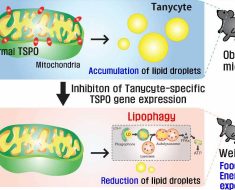The Food and Drug Administration recently announced its authorization that permits genetics testing company 23andMe to market a test for gene mutations associated with risk of breast and ovarian cancer.
In response, 23andMe CEO Anne Wojcicki asserted that the test represents a “major milestone in consumer health empowerment.”
Media articles following this announcement made it clear even if the test provides an accurate result, there are significant limitations for 23andMe’s version of the test about which consumers should be aware. Notably, 23andMe discloses that the test only provides information on three genetic variants found on the BRCA1 and BRCA2 genes known to be associated with a higher risk for breast, ovarian and prostate cancer in people of Ashkenazi Jewish descent.
According to the FDA, most mutations that would increase an individual’s risk are not detected by the test, including mutations that may occur in other patient populations.
As a health law professor and bioethicist, here are some things I think that patients should know about genetic tests and how to think about risk.
A bit about assessing risk
Research shows that women overestimate their risk of cancer and overestimate the potential of dying of cancer. This anxiety may prompt women to seek aggressive interventions even when they do not have cancer. In one study, 32.9 percent of women without a BRCA mutation who received a false positive (indicated they had cancer when in fact they did not) on a screening test for ovarian cancer and had no ovarian cancer opted for surgical removal of their ovaries, or an oophorectomy.
It is imperative to address this anxiety and situate what a cancer risk means for patients.
For starters, it is important to know that the chance of having a BRCA mutation is exceedingly rare, with only about 0.2 percent of population affected. Put another way, in a room of 500 women, only 1 would have a BRCA mutation that increases her baseline risk of breast and ovarian cancer. But even this woman with a BRCA mutation may never develop breast or ovarian cancer during her lifetime. In fact, 90 to 95 percent of most cancer diagnoses can be attributed to environmental and lifestyle factors, not an inherited faulty gene.
According to the Fred Hutchinson Cancer Research Center, up to one-third of cancer-related deaths are due to obesity and sedentary lifestyle. “Exercise is one of the most important actions you can take to help guard against many types of cancer,” experts at Fred Hutchinson say. A trial published in JAMA Internal Medicine confirmed the strength of dietary modification to drastically reduce risk of breast cancer. This information should be empowering. Many patients have much more control over certain – but not all – risks than they may have thought.
These discussions raise broader questions about how we treat patients regardless of whether they have an increased risk of cancer based on genetic testing or fall into a high risk category based on family history. For patients to make meaningful health decisions, they must have accurate information that includes understanding the risks and benefits of each choice.
Implications for overtreatment
Overtreatment that stems from anxiety not only leads to unnecessary and potentially harmful interventions for the patient, but it implicates physician liability. Traditionally, oncologists may favor an aggressive approach, offering and recommending interventions as a means to avoid malpractice litigation arising from patient perception that a physician could have intervened sooner. Aggressive treatment prompted by a patient’s anxiety requires further scrutiny specifically because each preventive intervention entails serious risks.
To note, 23andMe does caution that its test results should not be used on their own to make medical decisions. Women who test either positive or negative should still follow up with their physicians, both 23andMe and the FDA say.
If a woman has a BRCA mutation that increases her risk of cancer, the physician would likely recommend a risk-reducing measure recommended by the National Cancer Institute: chemoprevention, preventive mastectomy with reconstruction, and surgical removal of ovaries and fallopian tubes, called salpingo-oophorectomy.
In the majority of cases, women who undergo mastectomy also opt for implant reconstruction, and women who undergo salpingo-oophorectomy begin taking synthetic hormone replacement therapy.
In my research, I’ve read countless clinical practice guidelines, FDA meeting minutes, congressional hearing transcripts, and case law.
Here’s what I’ve learned: The potential for cancer risk reduction is only the first part of the equation. Yes, these interventions recommended by the National Cancer Institute do reduce risk for breast and ovarian cancer. But they also increase risk of other potentially debilitating or deadly conditions.
Many physicians agree the trade-off of reducing risk of cancer is worth it. But some physicians and patients may not be aware that physicians and clinical practice guidelines may downplay, omit or dismiss risks entirely in a manner that does not necessarily correspond to scientific evidence, but may be informed by financial conflicts of interest.
Source: Read Full Article





